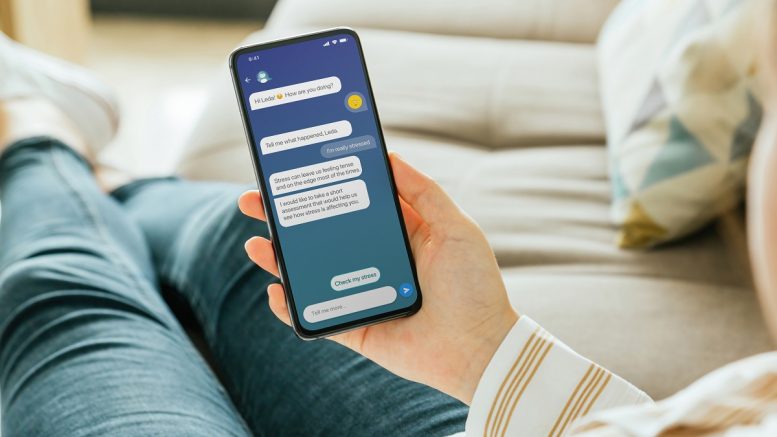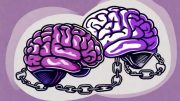We’re facing a mental health crisis. The World Health Organisation reports that Covid triggered a 25% increase globally in anxiety and depression. In March 2021 analysis of data from the UK Household Longitudinal Study found that the proportion of adults aged 18 and over reporting a clinically significant level of psychological distress was 24.5%, which equates to around 13 million adults. According to The King’s Fund think tank, mental health problems account for 23% of the burden of disease in the UK, although spending on mental health accounts for only 14.8% of the NHS budget in 2020-21.
But funding is only part of the problem. To treat mental health conditions effectively we need therapists. Whilst medication plays its part, at the core of effective and high quality support are appropriately trained and experienced therapists who specialise in evidence based interventions such as CBT.
Where are these trained therapists? We’re facing a growing shortage. The British Medical Association has warned of chronic under-recruitment in psychiatric professions, with a year on year decline in the numbers joining and growing numbers leaving, citing staff workload, wellbeing, morale and the ability of staff to provide good quality of care as some of the main drivers. Since 2009, there has been a loss of 7,000 nurses, health visitors and midwives and 6,000 clinical support staff, and 12% of medical vacancies are within mental health services. The UK Council for Psychotherapy put out a statement saying that more psychotherapists are needed in the NHS workforce to meet the UK’s looming mental health crisis.
As Sarb Bajwa, Chief Executive of the British Psychological Society says “patients will only see the benefit of increased access to evidence based, psychological treatment if there are trained psychologists available to administer it.”
The NHS has expressed its commitment to transforming mental health services, putting psychological therapies at the heart of the NHS Long Term Plan. The Mental Health Implementation Plan was published in July 2019, and cites a target of expanding the workforce by around 600 psychiatrists, 4,000 nurses, 8,000 psychologists, psychotherapists and psychological professionals, 5,000 support workers and 600 social workers by 2023/24. This builds on commitments made in NHS England’s ‘Five Year Forward view for Mental health’ in 2016 and Health Education England’s ‘Stepping forward to 2020/21: A mental health workforce plan for England’ in 2017 – but targets have not been met and are unlikely to be in the near future.
At the same time waiting lists are long and ever growing. People are not getting the treatment they need quickly enough, causing additional distress and/or increasing their risk, and many are discharged without a proper care plan, affecting patient quality of life as well as clinical outcomes. Although the ambition is for the majority of people to be assessed and engaged in regular talking therapy within six weeks, in reality the wait for weekly therapy can often be several months. This doesn’t work for anyone – the person, the NHS, or society as a whole.
One of the ways that the NHS is seeking to support people is through its Improving Access to Psychological Therapies (IAPT) programme. In 2020/21, 1.46 million people were referred to IAPT. With each contact costing on average £102.38 for low intensity therapy, and £173.88 for high intensity therapy, the total cost to the NHS is vast. And mental health costs the economy £105bn a year, combining healthcare costs, social care costs, and impacts on businesses.
Technology can help address the gap created by the lack of therapists. It can play a part in helping to guide people to resources which target their key symptoms whilst they remain on therapeutic waiting lists, as well as easing the pressure from therapists by supplementing clinical assessments and treatments with electronic triage tools (eTriage) and artificial intelligence driven guided self help interventions. Instant 24/7 access to interactive, AI-guided, mental health support technology means that patients can immediately start to manage their symptoms, thus preventing their mental health from deteriorating further whilst they wait for their face to face therapist appointment.
An eTriage solution gives people the opportunity to complete the majority of their assessment questions at a time that suits them, as well as offering a range of symptom-matched self care tools. It also reduces the time burden on clinicians so that they can focus on delivering treatments (and reducing waiting lists).. And by sharing real time patient data with clinicians during the waiting period, technology can help identify high risk responses and flag for clinical attention.
By offering these solutions, more clinical staff time and energy can be focused on supporting those who need it, as well as helping reduce strains on workload that are causing people to leave the workforce.
It’s not necessarily about saving money, but more directing resources in an efficient, patient centred way. At the moment many services, desperate to be able to offer something whilst people wait on waiting lists, are investing in ‘sticking plaster’ solutions that don’t always have evidence around their efficacy . There is a direct relationship between the length of time a person waits, and how likely they are to complete their treatment and recover. Using AI based digital technology, when a person reaches out for help, they aren’t left waiting for a therapist. Instead, they are proactively engaged which is key to improving clinical outcomes.
The use of digital technology is not about replacing trained a trained therapist with AI, but rather a way of empowering people to take control of their own care where possible and appropriate. It can allow patients to access the care system faster, as well as releasing administrative and clinical time, supporting improved access for patients and allowing therapists to focus on delivering treatments. It also helps to identify those who are at high risk to see whether they need to move into crisis services.
Another huge benefit is the facilitation of data sharing through integration with the digital care record (DCR) for psychological therapies services. The ongoing monitoring made possible by sharing of data can support the local service to manage clinical risk by highlighting if the patient needs more immediate or emergency attention. Therapists find it reassuring to know that clients will be able to access mental health support even outside of the regular sessions, giving continuity in care and encouraging higher patient engagement during therapy.
No-one doubts that the NHS is committed to doing the right thing for patients. Patient-orientated and recovery-focused care with long term outcomes in mind should always be the goal – the challenge is how we do this with reducing numbers of trained therapists, and squeezed budgets. Given that we spend around 4.8 hours a day on our phones, it would seem a natural choice to use this technology as a vehicle to reach people and reduce some of the impact of the therapist shortage.
We need to find innovative ways of increasing capacity within mental health services, in a person centred way that gives people access to what they need, when they need it. Technology is an enabler and can help fill the gap between the need for support from a therapist and the numbers available.
Article by Nicky Main, UK Clinical Lead for WYSA





